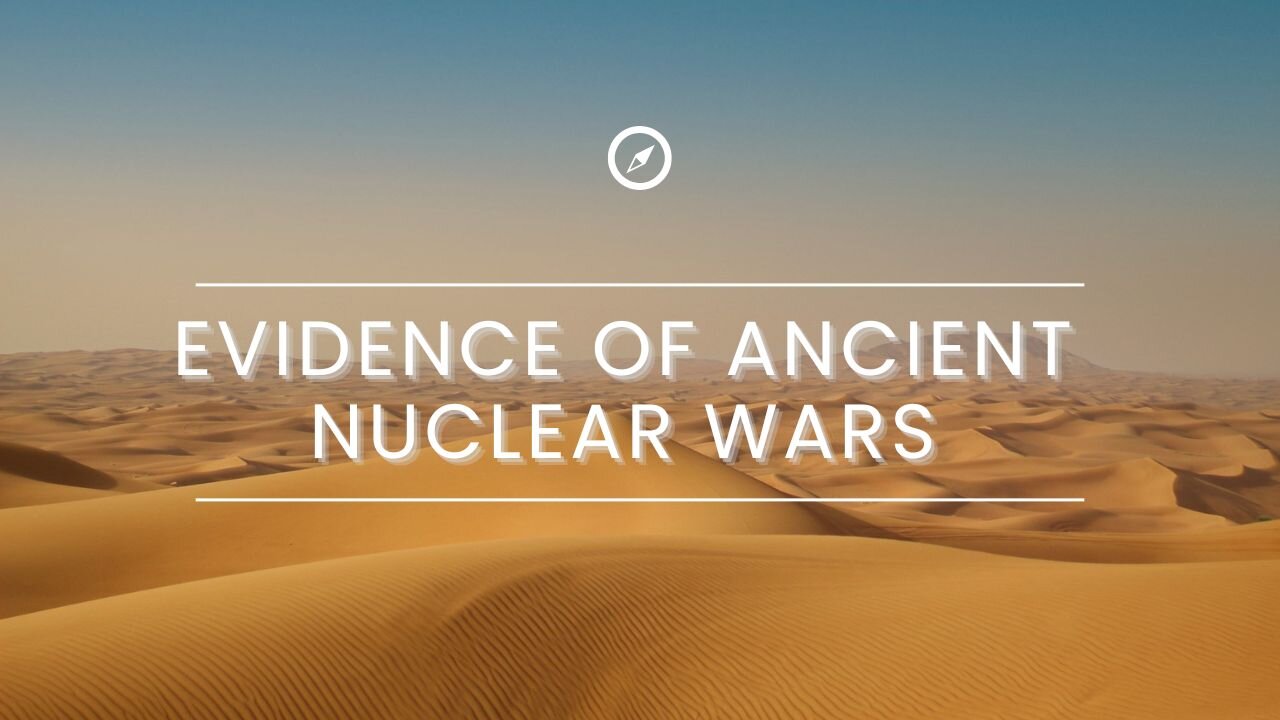Premium Only Content

Presenting Real Evidence of Ancient Nuclear Wars
-
In 1932, Patrick Clayton and a team from the Egyptian Geological Survey were driving through the dunes of the Great Sand Sea, close to the Saad Plateau in Egypt. As they drove, Clayton began to notice a curious noise emanating from under the vehicle, some sort of crunching sound from the tires entirely inconsistent with the usual noise made driving on sand.
-
Stopping to examine the situation, Clayton discovered that he and his team were driving on great sheets of greenish glass buried just under the sand; the crunching noise originating as the weight of the vehicle cracked and broke the glass into chunks beneath them.
-
Clayton and his team were puzzled – what could have caused this unusual phenomenon? A decade before the start of the Manhattan Project, they could not envision the type of force required to turn an ocean of sand into glass.
-
The dunes of Egypt, however, are far from the only place on earth where this so-called desert glass has been found.
-
In southern Iraq, a layer of glass was discovered deep in the earth during an excavation, under the Babylonian, Sumerian, and Neolithic strata, that is, in the geologic era right before cavemen.
-
Similar glass has also been found in the Gobi Desert of Mongolia and along the ancient Silk Road in China, at a site which has become known as the ‘Chinese Roswell,’ as well as in Israel, where a quarter-inch thick deposit of this glass was found spanning several hundred square feet in 1952.
-
-
 31:01
31:01
The Aquarius Bus
1 year agoExquisite Old World Philadelphia. Founded 1682. Why Did They Move The Capital to DC?
2.11K8 -
 LIVE
LIVE
Badlands Media
18 hours agoThe Narrative Ep. 43: Unity.
14,942 watching -
 2:43:11
2:43:11
TheSaltyCracker
3 hours agoWe Kill You Rally ReeEEStream 10-19-25
54.6K146 -
 7:54:17
7:54:17
Putther
8 hours ago $4.32 earned🔴LAZY SUNDAY STREAM!! (GTA + MORE)
40.3K6 -
 10:38
10:38
Colion Noir
2 hours agoHe Installed a Forced Reset Trigger at a Gun Range… and Got Arrested | What You Need to Know
37.4K11 -
 1:29:26
1:29:26
HELMETFIRE
1 hour ago🟢GAMING WITH FIRE EP13🟢
1.29K1 -
 50:40
50:40
Sarah Westall
3 hours agoAI, Social Media & Brain Atrophy: Destroying Human Capacity to Think w/ Rob Smith
8.7K5 -
 LIVE
LIVE
THOUGHTCAST With Jeff D.
57 minutes agoSunday Night FORTNITE with THOUGHTCAST Jeff D & crew.
86 watching -
 55:10
55:10
The Mel K Show
8 hours agoMel K & Mike L | The Tylenol Piece: It's a Marathon, Not a Sprint | 10-19-25
73.2K9 -
 LIVE
LIVE
MrMoBetta13
2 hours agoCFB26 CUT Ranked + NEW NIGHTMARE CARDS and talking college football!!
60 watching